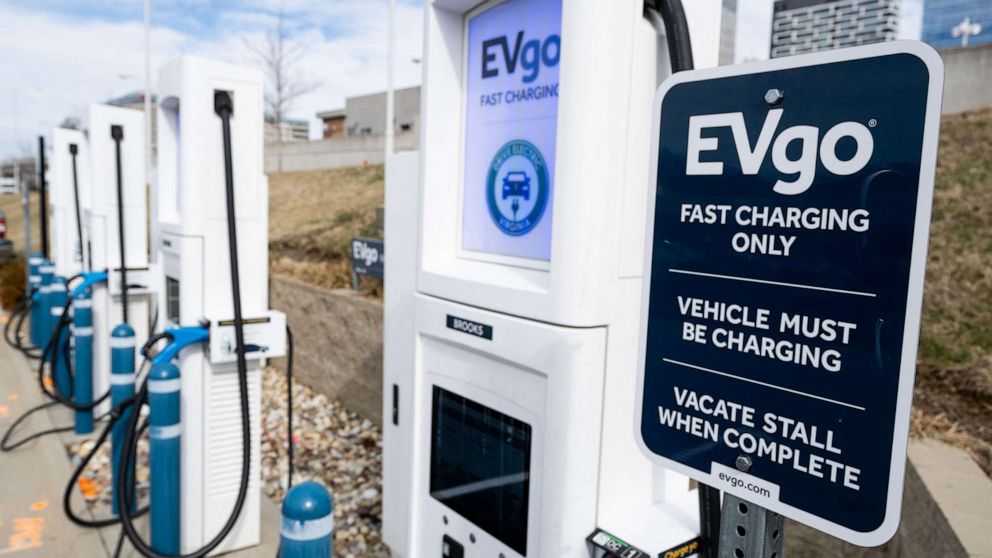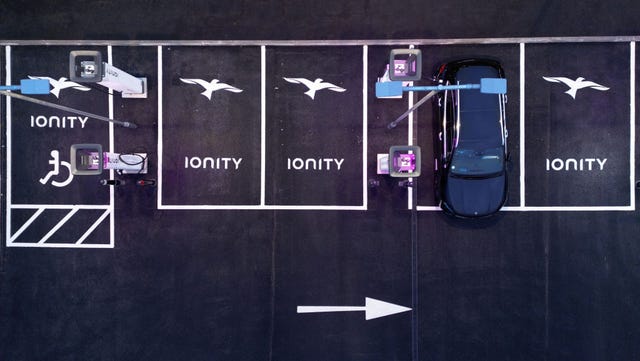Top EV Charging Information: Trick Updates on Framework and Technology

Current Improvements in Fast-Charging Innovation

Furthermore, innovations in battery modern technology, consisting of boosted thermal management systems and higher power thickness batteries, enhance fast-charging capabilities. These advancements minimize the danger of battery destruction during fast charging, ensuring longevity and efficiency for EV proprietors.
Furthermore, the combination of clever charging services is enhancing customer experience, allowing real-time tracking and dynamic prices models. EV Charging news. This versatility allows chauffeurs to maximize billing prices and times based upon grid need
As car manufacturers remain to purchase fast-charging networks, the partnership in between industry stakeholders is vital. Collaborations in between billing terminal suppliers and vehicle manufacturers are leading the method for comprehensive insurance coverage, ultimately cultivating a much more durable EV ecosystem. These developments are essential in supporting the change to sustainable transport.
Government Campaigns for Charging Growth
Government campaigns play a critical duty in the development of electrical vehicle (EV) billing facilities, helping with the transition to lasting transport. Various government and state programs are being applied to improve charging access, minimize the economic problem on customers, and promote the fostering of electrical vehicles.
Significantly, the united state government has assigned significant financing through the Facilities Financial Investment and Jobs Act, which sets aside $7.5 billion for EV billing network development across the country. This funding is focused on deploying thousands of brand-new charging terminals, especially in underserved areas, therefore attending to range anxiousness among possible EV purchasers.
In addition, many states are enacting regulation to improve the allowing procedure for charging terminal installations, which is critical for speeding up release. Rewards such as tax obligation debts and refunds for both customers and companies are additionally being introduced to motivate the installation of charging framework.
Furthermore, public-private collaborations are increasingly ending up being an emphasis, leveraging private investment to enhance government funding. These efforts emphasize a collaborative technique essential for developing a effective and thorough EV charging network, eventually adding to a greener and even more lasting future.
Innovative Battery Solutions Enhancing Effectiveness
Changing the landscape of electric vehicle (EV) innovation, ingenious battery remedies are significantly improving effectiveness and efficiency. Breakthroughs in battery chemistry, specifically with lithium-sulfur and solid-state batteries, are leading to boosted power density, which permits longer varieties and faster charging times. These brand-new battery types have the possible to outmatch conventional lithium-ion batteries by using greater abilities while lowering weight, therefore boosting total lorry performance.
Moreover, developments in battery management systems (BMS) are maximizing power use and expanding battery life-span. Smart formulas keep an eye on battery health and wellness and performance, enabling real-time adjustments to billing and releasing procedures. This not only enhances the efficiency of the battery yet additionally makes sure a much more reputable and sustainable power source for EVs.
Additionally, the integration of reusing innovations is dealing with the environmental influence of battery manufacturing and disposal. Developments in second-life applications for EV batteries are promoting their usage in energy storage space systems, adding to a circular economic situation.
As these ingenious battery services proceed to progress, they promise to change the EV market, making electric vehicles extra enticing and available to a more comprehensive target market while sustaining worldwide sustainability objectives.

Partnership In Between Automakers and Billing Networks
Acknowledging the essential demand for a durable billing framework, car manufacturers are significantly teaming up with billing network carriers to boost the EV More Info possession experience (EV Charging news). These collaborations intend to produce a seamless charging ecosystem that benefits customers and sustains the shift to electric cars
Significant automobile brands are signing up with pressures with recognized charging networks to expand their billing terminal protection, guaranteeing drivers have accessibility to trustworthy and practical charging alternatives. For circumstances, partnerships with networks like ChargePoint and Electrify America allow car manufacturers to integrate charging services straight into their automobiles' navigation systems, guiding customers to the closest terminals and offering real-time schedule updates.
Furthermore, these cooperations typically result in the advancement of fast-charging innovations that significantly minimize the time required to reenergize an EV. By pooling sources and competence, car manufacturers and charging networks can introduce faster, producing solutions that satisfy the expanding demand for electric flexibility.
Furthermore, joint campaigns may likewise bring about more standardized billing protocols, which can minimize customer confusion and promote wider EV fostering. In general, these calculated partnerships are critical in developing a reliable and user-friendly billing infrastructure that meets the requirements of an increasing electrical vehicle market.
Difficulties Dealing With EV Billing Framework
As the electrical automobile market proceeds to grow, several difficulties are emerging that impede the growth of a thorough charging infrastructure. One of the primary obstacles is the inadequate number of charging stations, especially in underserved and rural metropolitan areas. This space produces variety stress and anxiety amongst prospective EV purchasers, preventing them from making the button.
Furthermore, the lack of standardization in charging innovation complicates the infrastructure landscape. Variations in plug types and billing rates can develop confusion for users and increase operational intricacies for charging network drivers. The combination of charging terminals right into existing electrical grids positions considerable obstacles. Many regions face ability restrictions, calling for considerable investments in grid upgrades to suit boosted demand.
An additional pressing concern is the high cost associated with the setup and maintenance of billing terminals, which can be a barrier for both private businesses and public entities. Lastly, regulative hurdles and zoning restrictions can delay the implementation of charging framework, hampering progress in broadening important solutions. Resolving these challenges will certainly be crucial for promoting a durable EV ecosystem that supports the change to sustainable transportation.
Conclusion
In final thought, the recurring advancements in EV charging innovation, sustained by substantial federal government campaigns and innovative battery services, are important for the growth and performance of electrical lorry framework. Cooperations in between automakers and billing suppliers better boost terminal insurance coverage, resolving the expanding need for easily accessible charging options. Regardless of obstacles that persist within the EV charging landscape, these developments signify a positive trajectory in the direction of an extra sustainable and effective electrical visit this page lorry ecological community.
Technologies in billing facilities have led to the development of ultra-fast battery chargers qualified of providing up to 350 kW of power, considerably reducing charging times. Variations in plug kinds and billing rates can create complication for users and increase operational complexities for billing network operators.In verdict, the ongoing developments in EV charging modern technology, sustained by significant government efforts and cutting-edge important site battery services, are vital for the expansion and effectiveness of electric vehicle infrastructure. Partnerships between car manufacturers and charging companies further improve terminal insurance coverage, resolving the growing need for easily accessible charging choices. Regardless of obstacles that persist within the EV billing landscape, these developments signify a favorable trajectory towards a much more efficient and lasting electrical lorry community.